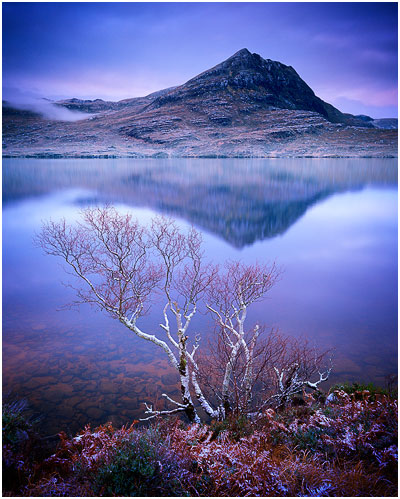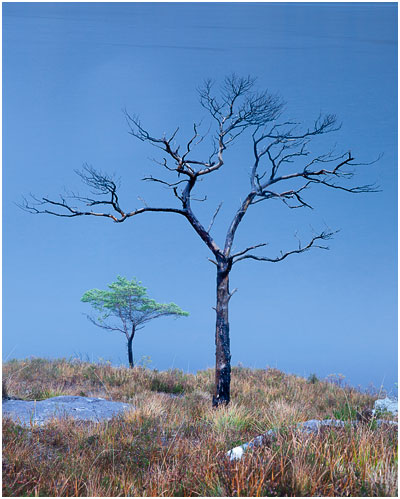One of the main aspects of composition, that I like to cover on my workshops, is that of separation. Separation? What exactly does Bruce mean? I hear you say.
Take the image above. One of the most common compositional mistakes made by photographers is that of overlapping objects so they become indistinguishable from each other. I can think of many images I've seen of Uncle Norman with a tree sticking out of his head, because the photographer, didn't appreciate that when the tree behind his uncle, and his uncle, once flattened down to a 2D image, would become one object - that of Uncle Norman with a tree growing out of his head.
Separation is the act of identifying objects in the frame and giving them enough body space, so that they don't encroach on other object, or cause tonal conflict.
As photographers, we have to think in 2D. Thinking in 3D means that it's all too easy to see two objects and distinguish between them. Once flattened down into 2D, if they have the same tonal range to them, they can very easily become one confused mass. Consider two stones of the same texture and shade, and if one is right behind the other, then once flattened down, they become one big confused lump of similar texture and tone.
When I made the picture of the tree at the edge of Loch Lurgainn, I noticed that the reflection of the mountain had the same shape as the outline of the tree. A decade ago, I'm sure I wouldn't have recognised the relationship, and I wouldn't have been considered about where to place the reflection and the tree in the frame. Well, it's certainly something I'm very aware of these days - and if I see any 'echo' like this in the landscape, I try to utilise it. In the case of this image, I spent quite some time moving my tripod around on a steep embankment, so that I could have the outline of the tree fit snugly into the crest of the mountains reflection.
In terms of separation, I made sure they did not overlap, because they would have created a form of tension that would have rendered the image a failure. The degree of separation between tree and mountain is very small though - because I felt they fitted together like a jigsaw, and should be photographed to illustrate this tight relationship.
Well, this past weekend, while I was in Torridon, conducting a workshop, one of the participants - Steve Ellis, really took to the idea of separation that I'd covered during my Friday evening talk and made this image:
We arrived at the edge of Loch Maree in what I can only describe as 'gloom'. We'd suffered with a lot of rain for the entire day and things didn't look promising for a decent evening shoot. But if you don't go, you don't get, and in this case, what Steve found was that the backdrop of misty rain on the loch. Yes, the sky you see in this photo isn't sky - it's the loch.
I've been to this location on countless times now, as I take most of my participants on the Torridon weekend workshop here, but I've never seen a photo like this until this weekend. I believe it happened mainly because of the atmospheric conditions. If we'd had more visibility, the loch would have been less diffused, and as a result, would have been more attention seeking.
But Steve had also taken what I'd been explaining about separation to heart and deliberately placed the smaller tree under the arm of the larger tree. I remember him scanning through his 5DM2 on location and showing me other examples. It's always a great feeling to know that someone has not only picked up what I've been trying to teach, but has discovered material out in the landscape with which to apply it to.
I'll discuss more about this image in a few days.


